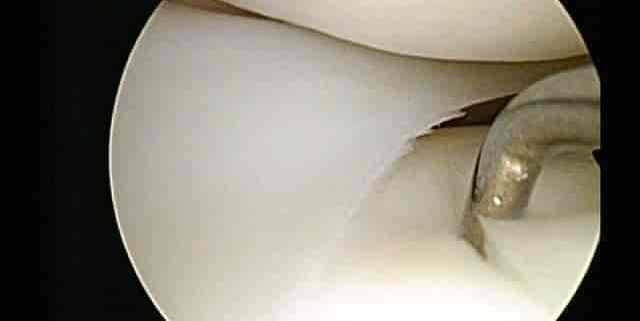Meniscal Surgery

Overview
Meniscal surgery is a treatment chosen when an individual sustains damage to the meniscus – a piece of cartilage that provides a cushion between your thighbone (femur) and shinbone (tibia). The damage usually results from a tear or rupture, mostly due to sports injuries or certain movements. The meniscus is crucial for the smooth movement of your knee, and damage to it can cause pain, swelling, and difficulty in movement.
Types
Meniscal surgeries are divided into two main types:
1. Meniscectomy: This is a surgical procedure where the surgeon removes the torn portion of the meniscus. It can be either partial (only a portion of the meniscus is removed) or total (the entire meniscus is removed).
2. Meniscal Repair: In this procedure, the surgeon stitches the torn meniscus back together.
Causes
A torn meniscus is often seen amongst athletes as it can be caused by actions like twisting or turning quickly, with the foot planted and the knee bent. Elderly people are also at risk because the meniscus weakens and wears thin over time, making them more prone to tears. Some people might even experience a meniscus tear with minimal twisting or turning, such as when getting up from a chair.
Symptoms
The common symptoms of a meniscal tear include:
– Pain in the knee
– Swelling or stiffness
– Feeling of your knee giving way
– Difficulty in moving your knee or lack of full range of motion
– A sensation of your knee ‘getting stuck’ or locking
Diagnosis
Meniscus tears are diagnosed using a combination of your medical history, a physical examination, and imaging tests. In the physical exam, your doctor may manipulate your knee and leg to check for tenderness or range of motion. Imaging tests, such as an MRI, provide detailed images of both hard and soft tissues, including the menisci.
Treatment Options
Treatment for meniscus tears depends on the size and location of the tear. Some minor tears might heal on their own with rest, ice, compression, and elevation (RICE therapy). Medications to reduce pain and inflammation are also often prescribed.
In cases where the tear is larger or in a location where it cannot heal on its own, meniscal surgery might be recommended. This can involve a meniscectomy or a meniscal repair, as described earlier.
Physiotherapy is also a critical part of recovery, whether you opt for surgical or non-surgical treatment. It helps to strengthen your knee and restore full range of motion.
Living With Meniscal Surgery
Life after meniscal surgery requires certain adjustments. You may need to use crutches or a knee brace for some time following the surgery. Rehabilitation exercises will also be crucial to help you regain knee strength and motion. It’s important to follow your doctor’s advice on when you can get back to regular activities.
When to Seek Help
If you experience symptoms of a meniscal tear, it’s essential to seek medical attention immediately. Untreated cases can result in long-term issues like chronic knee pain and arthritis. Resorting to self-care and ignoring these symptoms could further damage your knee. Contact your doctor immediately if your knee is swollen, you can’t bear weight on it, or if it locks.
Note: It’s important to remember that the information provided here is intended to inform and should not replace individualized advice from a medical professional. Always consult your healthcare provider for advice that pertains to your specific health condition.
